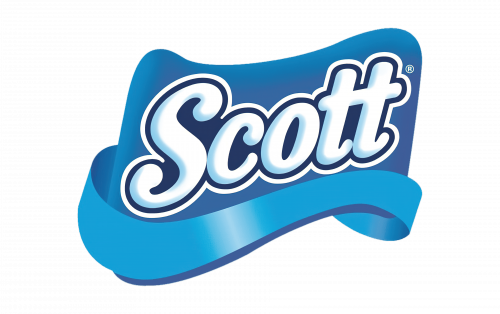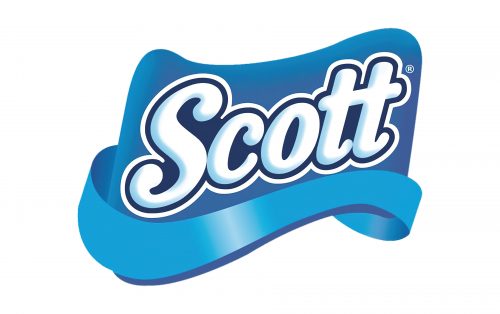Such brands as Scott Tissue, Cottonelle, Baby Fresh, Scottex, and Viva might not ring a bell now, but three decades ago they were household names. They belonged to the Scott Paper Company, which was the world’s best-known manufacturer of sanitary tissue products.
Meaning and history
The company was established in 1879 in Philadelphia. According to a corporate legend, Scott was the first company that sold toilet paper on a roll.
Although the brand is very old, we can hardly trace the evolution of the Scott logo adequately. Firstly, a century ago the approach to visual brand identity was different. Logos were pretty fluid. Not only details but even the whole design could be modified annually. Even more, different versions were used simultaneously as company owners often didn’t believe they needed a consistent brand identity. However, we can analyze more recent examples.
2003 – present
In 1995, Scott Paper was purchased by Kimberly-Clark. Baby Fresh was purchased by Procter & Gamble, while the US part of the Scotties facial tissue brand was acquired by Irving Tissue. The Canadian subsidiary of Scott was also sold, and it was renamed Kruger Inc. After the deals were closed, Kimberly-Clark went on using the Scott brand for various products.
You can come across at least two versions of the Scott logo. While they have the same structure, there are subtle differences.
Both feature the word “Scott” in the central position. The letters are white with a black outline. There is also the word “Brand” in very small white letters. It looks slightly different in each of the versions.
In addition to it, in one logo, there is the lettering “Products” in smaller glyphs below, while in the other version, this space is left blank.
In the background, there is an asymmetric curvy shape. It looks like a wave due to its blue color. Also, there is something similar to a toilet paper roll – at least, the paper there can also form such a wave.
What is Scott
The Scott Paper Company used to be the biggest producer of sanitary tissue products in the world. In 1994, a year before it was sold to the Kimberly-Clark Corporation, its consolidated sales reached $3.6 billion. The company was headquartered in Tinicum Township, Delaware County, Pennsylvania.
The wave interpretation is supported by the light trim of a different color that is present in both the logos. In the logo featuring the word “Products,” the trim is teal, while in the second version, the trim is light gray. Also, the strokes slightly vary, although the general style is pretty similar.
That is not to say that the design is very straightforward. Conversely, the associations here are subtle. That’s why the Scott logo can be described as abstract. This is a wise move when a company doesn’t want to be confined by the emblem, which often happens when the emblem depicts a certain product.
Colors and font
The choice of blue color can be explained by the fact that the brand is connected with sanitary products. Blue, as the color of the water, is associated with purity. That’s why many brands manufacturing sanitary products choose blue as the core of their palette.
The Scott logo combines two or three typefaces. The one used for the name of the brand looks very dynamic due to the fact it’s italicized. Also, it is streamlined, with rounded corners. This perfectly fits the soft wavy shape of other elements.









